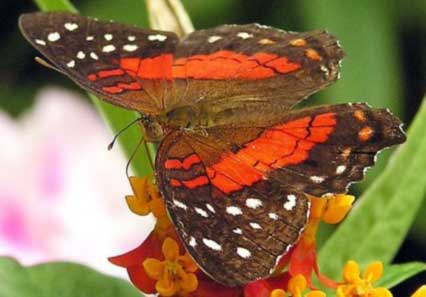 |
 |
All About Insects |
||||||||||||||||||||||||||||||||||||||||||||||||||
|
Insects are invertebrate animals of the Class Insecta, the largest and (on land) most widely distributed taxon within the Phylum Arthropoda. Insects comprise the most diverse group of animals on the earth, with around 925,000 species described—more than all other animal groups combined. Insects may be found in nearly all environments on the planet, although only a small number of species have adapted to life in the oceans where crustaceans tend to predominate. Estimates of the total number of current species, including those not yet known to science, range from two to thirty million, with most authorities favoring a figure midway between these extremes. The study of insects is called entomology. Insects range in size from less than a millimeter to over 18 centimeters (some walkingsticks) in length. Insects possess segmented bodies supported by an exoskeleton, a hard outer covering made mostly of chitin. The body is divided into a head, a thorax, and an abdomen. The head supports a pair of sensory antennae, a pair of compound eyes, and a mouth. The thorax has six legs (one pair per segment) and wings (if present in the species). The abdomen has excretory and reproductive structures. Most insects have two pairs of wings located on the second and third thoracic segments. Insects are the only invertebrate group to have developed flight, and this has played an important part in their success. The winged insects, and their secondarily wingless relatives, make up the subclass Pterygota. Insect flight is not very well understood, relying heavily on turbulent atmospheric effects. In more primitive insects it tends to rely heavily on direct flight muscles, which act upon the wing structure. More advanced flyers, which make up the Neoptera, generally have wings that can be folded over their back, keeping them out of the way when not in use. In these insects, the wings are powered mainly by indirect flight muscles that move the wings by stressing the thorax wall. These muscles are able to contract when stretched without nervous impulses, allowing the wings to beat much faster than would be otherwise possible.
Insects use tracheal respiration in order to transport oxygen through their bodies. Openings on the surface of the body called spiracles lead to the tubular tracheal system. Air reaches internal tissues via this system of branching trachea. The circulatory system of insects, like that of other arthropods, is open: the heart pumps the hemolymph through arteries to open spaces surrounding the internal organs; when the heart relaxes, the hemolymph seeps back into the heart. Insects hatch from eggs, and undergo a series of moults as they develop and grow in size. This manner of growth is necessitated by the exoskeleton. Moulting is a process by which the individual escapes the confines of the exoskeleton in order to increase in size, then grows a new outer covering. In most types of insects, the young, called nymphs, are basically similar in form to the adults (an example is the grasshopper), though wings are not developed until the adult stage. This is called incomplete metamorphosis. Complete metamorphosis distinguishes the Endopterygota, which includes many of the most successful insect groups. In these species, an egg hatches to produce a larva, which is generally worm-like in form. The larva grows and eventually becomes a pupa, a stage sealed within a cocoon or chrysalis in some species. In the pupal stage, the insect undergoes considerable change in form to emerge as an adult, or imago. Butterflies are an example of an insect that undergoes complete metamorphosis. Many insects possess very refined organs of perception. In some cases, their senses can be more capable than humans. For example, bees can see in the ultraviolet spectrum, and male moths have a specialized sense of smell that enables them to detect the pheromones of female moths over distances of many kilometers. Social insects, such as the ant and the bee, are the most familiar species of eusocial animal. They live together in large well-organized colonies that are so tightly integrated and genetically similar that the colonies are sometimes considered superorganisms. |
|||||||||||||||||||||||||||||||||||||||||||||||||
All text is available under the terms of the GNU Free Documentation License |



